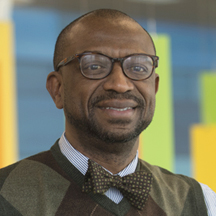"Are you an autism-friendly hospital?"
The question came from a pair of health care professionals, parents of an adult son with autism who had long received care at our hospital. Now under adult treatment, their son was no longer a patient, yet they took the time to ask me, a pediatric physician and hospital leader, about our readiness to meet the needs of individuals like him.
“Yes,” I replied.
“No,” his mother responded. Her words came quickly and clearly. She shared with me what an autism-friendly hospital meant, showing that our hospital, despite its best intentions, had room to grow. In her checklist of standards, I saw items we hadn’t considered. Though I had decades of experience in critical care, this encounter illuminated how much more we needed to do. It was an opportunity to listen, learn, and commit to better care.
This is the heart of Diversity, Equity, and Inclusion (DEI) — a collective effort to address the unique needs of individuals by learning from those we serve. Today, DEI has evolved beyond race and gender, encompassing every dimension of human diversity. It asks that we not only look but listen closely, seek to understand, and act meaningfully. DEI calls for authenticity in health care leadership — an authenticity that recognizes we’re always learning. Once we know better, we are duty-bound to do better.
The evolution of DEI
DEI’s roots trace back to the Civil Rights Movement, yet it has broadened in scope to include people across gender identities, abilities, and cultural backgrounds. Today, the DEI movement is a framework through which we understand that society flourishes when everyone is seen, valued, and supported. At my institution, we’ve integrated DEI into a cultural foundation that includes two models prioritizing accountability, learning, and safety above blame.
This framework rejects ungrounded norms that have impeded growth. For example, critical care teams once widely accepted that catheter-related bloodstream infections were inevitable. Yet, with focus and training, rates have declined dramatically. DEI now challenges us to shed similar myths about identity, race, and gender — beliefs that insidiously limit equity and inclusion in patient care.
Resistance and reconciliation
Despite the clarity of its goals, DEI meets resistance, often couched in arguments like “I only see one race: the human race.” A pediatric bariatric surgeon once shared with me how his team, by simply observing and listening, identified specific needs for bariatric patients. These changes — a closer parking area and stronger restroom fixtures — demonstrated what happens when we remove assumptions, observe patients’ needs, and act to improve their care experience. DEI similarly calls us to examine assumptions and act on what we learn for the betterment of all.
Resistance to DEI often stems from discomfort. For instance, there is an understandable reluctance to confront the history of race relations in America. However, DEI is not a call for division but a recognition of shared history, both painful and triumphant. It’s a chance to understand how past injustices echo into the present and to ensure that today’s health care settings are healing spaces, regardless of one’s background.
Beyond victimhood
Another misunderstanding of DEI is that it fosters a culture of victimhood. Victimhood is the identity some individuals adopt after being wronged, often becoming angry and withdrawn. Yet, DEI does not intend to amplify feelings of victimhood; instead, it provides a framework for understanding. Listening to marginalized voices fosters healing. This recognition allows leaders and clinicians alike to empathize deeply, creating environments where everyone is free to contribute.
“Do better” mindset
A quote by Maya Angelou resonates deeply with DEI: “Do the best you can until you know better. Then, when you know better, do better.” Leaders must be open to new perspectives and unafraid to rethink assumptions. When we encounter new insights, DEI challenges us to adjust, no matter how uncomfortable.
For example, pediatric health care has traditionally faced challenges caring for children with autism undergoing procedures like MRIs. However, with a preparation strategy involving reduced sensory stimulation, staff now work in sync, improving the experience for patients and providers alike. Such improvements align with DEI’s commitment to equity by shaping our environment to meet each patient's unique needs.
Pathway to inclusion and trust
Ultimately, DEI promotes a culture of intimacy, where leaders and clinicians trust one another enough to discuss and address differences openly. Trust builds when we are willing to be uncomfortable, acknowledge our gaps, and address them together.
A commitment to DEI is an investment in our patients and our workforce, bringing to light solutions for health care challenges that impact lives. Let’s step forward, embracing DEI not as a directive but as an opportunity for growth. We have the capacity to enrich patient care, improve clinical outcomes, and foster a healthier society — one in which everyone can participate fully. We owe it to our communities to engage in this journey, making health care a place where every voice can be heard and every need met.




